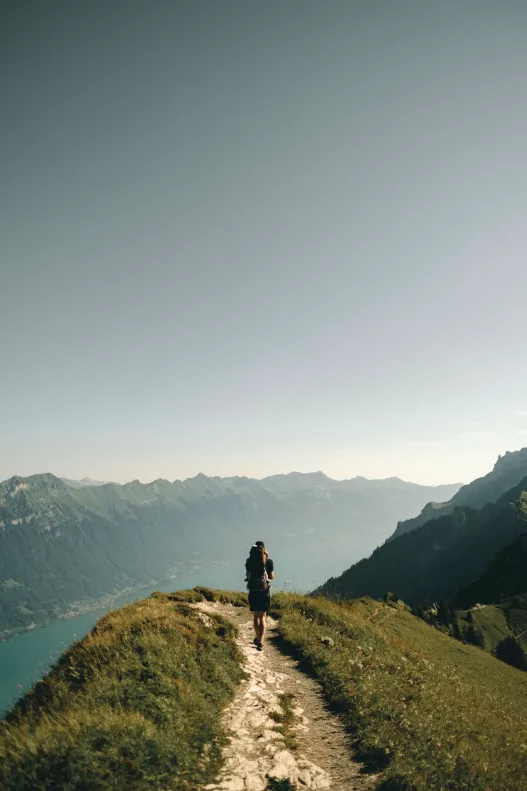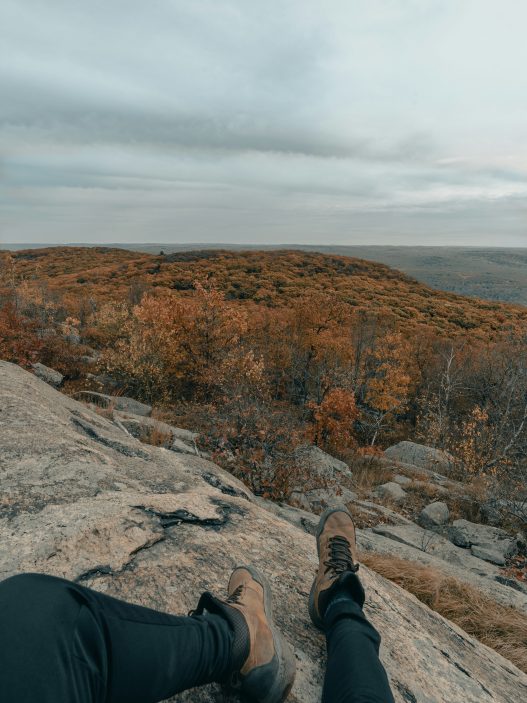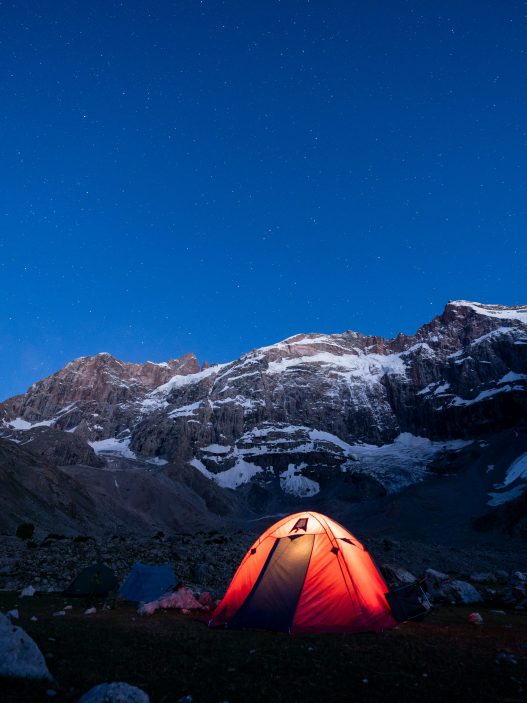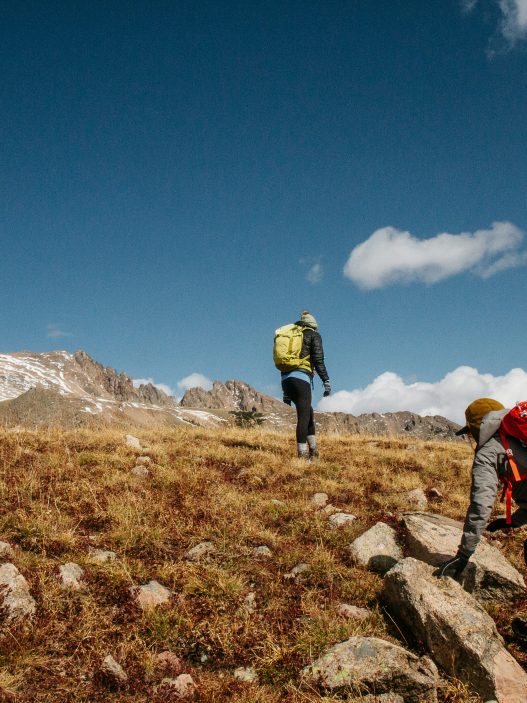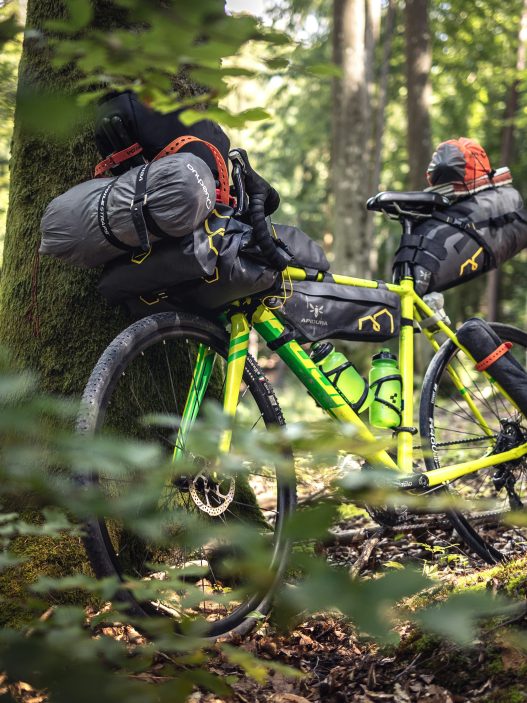Multi-day trekking requires careful planning across three critical areas: nutrition, accommodation, and equipment selection. Successful trekkers plan their meals around lightweight, high-energy foods that won’t spoil, identify camping spots with water access and shelter options, and create comprehensive packing lists that balance essential gear with manageable weight.
The difference between an enjoyable trek and a miserable experience often comes down to preparation. Poor meal planning leads to hunger and fatigue, whilst inadequate camping spot research can leave trekkers exposed to harsh weather or without water sources.
Effective preparation involves understanding food preservation techniques, researching terrain and weather patterns, and selecting gear that serves multiple purposes. These skills transform challenging multi-day adventures into rewarding experiences that build confidence and create lasting memories.
Planning Your Multi-Day Trek
Route selection, duration estimation, and weather assessment form the foundation of any successful multi-day trek. These three elements determine everything from gear requirements to safety protocols.
Selecting a Route
Route selection depends primarily on fitness level, experience, and available time. Beginners should choose well-marked trails with regular water sources and established campsites.
Popular beginner routes include the Pennine Way sections, Coast to Coast segments, or circular routes in the Lake District. These offer good infrastructure and emergency access points.
Key factors for route selection:
- Distance per day: 15-25km for experienced trekkers, 10-15km for beginners
- Elevation gain: Under 800m daily for novices, up to 1,500m for advanced
- Water availability: Sources every 10-15km maximum
- Escape routes: Multiple exit points for emergencies
Research recent trail conditions through local hiking groups or park services. Trail closures, bridge damage, or seasonal restrictions can force route changes.
Estimating Trek Duration
Duration calculation requires considering daily distance, terrain difficulty, and rest requirements. Most trekkers cover 2-4km per hour on moderate terrain.
Use Naismith’s Rule as a baseline: allow one hour for every 5km of distance plus 30 minutes for every 300m of ascent. Add 20% buffer time for breaks and unexpected delays.
Duration factors:
- Fitness level: Affects daily distance capability
- Pack weight: Heavier loads reduce speed significantly
- Weather conditions: Rain or wind can halve progress
- Group size: Larger groups move slower
Account for rest days on treks longer than four days. Physical recovery prevents injury and maintains enjoyment levels.
Assessing Weather and Terrain
Weather patterns vary dramatically by season and location. Check 10-day forecasts before departure and monitor conditions during the trek.
Seasonal considerations:
- Spring: Variable weather, muddy trails, limited daylight
- Summer: Stable conditions, crowded trails, heat stress risks
- Autumn: Shorter days, wet conditions, beautiful scenery
- Winter: Extreme cold, snow, specialist equipment required
Terrain assessment involves studying topographic maps for elevation changes, river crossings, and potential hazards. Steep descents prove more challenging than ascents for most trekkers.
Consider ground conditions based on recent weather. Heavy rain creates boggy conditions that slow progress considerably. Rocky terrain requires different footwear than forest paths.
Creating a Meal Preparation Strategy
Proper meal planning requires calculating daily caloric needs, selecting lightweight foods with high nutritional density, and preparing portions for each day of the trek.
Calculating Nutritional Needs
Trekkers require 2,500-4,000 calories per day depending on body weight, terrain difficulty, and weather conditions. Cold weather and steep ascents increase caloric demands significantly.
Daily macronutrient targets:
- Carbohydrates: 45-65% of total calories
- Proteins: 10-35% of total calories
- Fats: 20-35% of total calories
A 70kg person hiking 8 hours daily needs approximately 3,200 calories. This breaks down to 1,440-2,080 calories from carbohydrates, 320-1,120 from protein, and 640-1,120 from fats.
Weight considerations matter equally. Food weight should not exceed 1kg per person per day for backpacking comfort.
Choosing Portable Foods
Dehydrated and freeze-dried foods provide maximum nutrition per gram. These options retain 97% of original nutritional value whilst reducing weight by 80-90%.
High-calorie portable options:
- Nuts and seeds (500-700 calories per 100g)
- Energy bars (400-500 calories per 100g)
- Dried fruits (300-400 calories per 100g)
- Instant porridge (350-400 calories per 100g)
Avoid fresh produce beyond day one. Tinned foods add unnecessary weight. Choose foods requiring minimal cooking fuel and water.
Packet soups, instant noodles, and powdered sauces provide flavour without bulk. Pre-cooked rice and pasta reduce cooking time significantly.
Meal Prepping for Each Day
Portion meals into daily bags before departure. Label each bag with the day and meal type to prevent confusion on the trail.
Daily meal structure:
- Breakfast: 600-800 calories
- Lunch: 700-900 calories
- Dinner: 800-1,000 calories
- Snacks: 400-600 calories
Pre-mix dry ingredients for porridge, soups, and hot drinks. Store liquids separately in leak-proof containers. Double-bag everything to prevent spillage.
Calculate water requirements for each meal. Dehydrated meals typically need 250-400ml of boiling water per serving.
Pack the first day’s meals on top for easy access. Store heavy items like tinned fish or fresh bread for consumption within 24 hours.
Food Storage and Safety
Proper food storage prevents spoilage and protects hikers from foodborne illness. Keeping food away from wildlife and managing waste correctly ensures both safety and environmental protection.
Safe Food Handling Practices
Hikers should wash their hands with soap and water before handling food. When water isn’t available, alcohol-based hand sanitiser with at least 60% alcohol works as an alternative.
Temperature Control Guidelines:
- Keep perishables below 4°C using insulated containers
- Consume perishable items within 2 hours at temperatures above 32°C
- Freeze meat and dairy products before departure to extend freshness
Raw meat requires separate storage from other foods. Hikers should use sealed containers or double-bagged plastic bags to prevent cross-contamination.
Clean utensils and surfaces with hot water and soap after each use. A small bottle of washing-up liquid weighs minimal but prevents bacterial growth on equipment.
Cook food to proper internal temperatures: 74°C for poultry, 71°C for ground meat, and 63°C for whole cuts of beef and pork.
Storing Food on the Trail
Bear-resistant containers provide the most secure storage in areas with active bear populations. These hard-sided containers meet specific size and locking requirements.
Rope hanging method works when bear canisters aren’t required. Suspend food bags at least 4 metres high and 1.5 metres from tree trunks.
Store food in waterproof containers or dry bags to prevent moisture damage. Double-bag items prone to leaking like cooking oils or sauces.
Recommended storage locations:
- Inside tents only in areas without wildlife concerns
- Vestibules for overnight access to breakfast items
- Vehicle storage when car camping
Never leave food unattended at campsites. Rodents and birds can damage packaging and contaminate supplies within minutes.
Minimising Waste and Wildlife Risks
Pack out all food waste, including fruit peels and nut shells. These items attract wildlife and disrupt natural ecosystems.
Proper food scrap disposal:
- Strain cooking water through fine mesh to catch particles
- Scatter strained water 70 metres from campsites and water sources
- Pack solid waste in dedicated rubbish bags
Use unscented toiletries and avoid strongly aromatic foods like fish or bacon in high-risk wildlife areas.
Clean cooking equipment thoroughly after each meal. Food residue on pots and utensils creates odours that attract animals.
Store rubbish in the same secure containers used for food. Wildlife cannot distinguish between food waste and actual food items.
Finding and Selecting Camping Spots
Successful camping spot selection requires thorough research of designated sites, careful evaluation of wild camping opportunities, and securing proper permits well in advance.
Researching Designated Campsites
Designated campsites offer predictable amenities and established booking systems. Most national parks and popular trekking routes maintain official campgrounds with facilities like toilets, water sources, and waste disposal.
Research begins with official park websites and guidebooks. These sources provide detailed maps showing campsite locations, available facilities, and seasonal closures. Many sites include photos and reviews from previous visitors.
Key factors to evaluate:
- Water availability and quality
- Toilet facilities and waste disposal
- Shelter options (huts, covered areas)
- Booking requirements and costs
- Maximum group sizes
Popular routes like the Pennine Way or Coast to Coast Walk have well-documented camping options. Guidebooks often include GPS coordinates and detailed descriptions of each site’s condition and facilities.
Check seasonal availability carefully. Many high-altitude sites close during winter months due to weather conditions. Some coastal campsites restrict access during bird nesting seasons.
Evaluating Wild Camping Options
Wild camping requires careful assessment of terrain, weather exposure, and environmental impact. Suitable spots must be flat, well-drained, and protected from prevailing winds.
Terrain considerations:
- Ground condition: Avoid boggy areas, rocky surfaces, or steep slopes
- Drainage: Choose elevated spots that won’t flood during rain
- Wind protection: Natural windbreaks like hills or tree lines
- Water access: Within reasonable distance of reliable water sources
Legal restrictions vary significantly by region. Scotland permits wild camping under the Right to Roam legislation, whilst England and Wales have more restrictive laws. Many areas prohibit camping entirely or require landowner permission.
Environmental impact assessment is crucial. Campers should avoid fragile ecosystems, wildlife habitats, and areas showing signs of previous damage. The Leave No Trace principles apply strictly to wild camping situations.
Weather patterns influence site selection significantly. Exposed ridges become dangerous during storms, whilst valleys may experience temperature inversions and condensation issues.
Securing Permits and Reservations
Permit requirements vary dramatically between locations and seasons. Popular routes often require advance booking months ahead, particularly during peak summer months.
Common permit types:
- Camping permits: Required for most national parks
- Route permits: Needed for specific trails or protected areas
- Group permits: Different requirements for larger parties
- Seasonal permits: Variable restrictions based on time of year
Booking systems range from simple online forms to complex lottery systems. Some parks like those in Scotland require no permits for wild camping, whilst others impose strict quotas and advance booking requirements.
Many permits include specific conditions about campfire restrictions, waste disposal, and group behaviour. Violation of permit conditions can result in fines and future booking restrictions.
Payment methods and cancellation policies vary significantly. Some permits are non-refundable, whilst others allow changes up to specific deadlines. Travel insurance may cover permit costs if trips are cancelled due to weather or emergency.
Contact park authorities directly for complex itineraries or unusual requirements. Rangers can provide current information about trail conditions, seasonal closures, and alternative camping options.
Essential Packing Lists for Multi-Day Treks
Proper packing makes the difference between a successful trek and a miserable experience. The right clothing layers, reliable shelter, and essential safety equipment form the foundation of any multi-day hiking adventure.
Clothing and Footwear Essentials
Base layers should include moisture-wicking merino wool or synthetic materials. Pack two to three sets for extended treks. Avoid cotton as it retains moisture and loses insulation when wet.
Mid layers provide insulation and temperature regulation. A lightweight fleece or down jacket works well for most conditions. Hikers should choose pieces that compress easily in a pack.
Outer layers must protect against wind and rain. A waterproof, breathable jacket and trousers are essential. Look for sealed seams and pit zips for ventilation.
Footwear requires careful consideration. Hiking boots should be broken in before the trek. Pack lightweight camp shoes for evening comfort.
| Item | Quantity | Purpose |
|---|---|---|
| Hiking socks | 3-4 pairs | Moisture management |
| Underwear | 2-3 pairs | Comfort and hygiene |
| Hiking trousers | 1-2 pairs | Protection and mobility |
| Hat and gloves | 1 each | Temperature regulation |
Shelter and Sleeping Gear
Tents should match expected weather conditions. Three-season tents work for most UK trekking. Weight matters for backpacking, so consider single-wall designs for solo hikers.
Sleeping bags need appropriate temperature ratings. Choose bags rated 5-10°C below expected nighttime lows. Down provides better warmth-to-weight ratios but loses insulation when wet.
Sleeping pads prevent heat loss to the ground. Closed-cell foam pads are reliable but bulky. Inflatable pads offer comfort but can puncture.
Additional items include a pillow or stuff sack, repair kit for gear, and guylines for tent stability. Pack a lightweight tarp for extra shelter options.
Navigation and Safety Equipment
Navigation tools start with detailed topographic maps and a compass. GPS devices provide backup but require batteries. Download offline maps to smartphones as additional redundancy.
Safety equipment includes a first aid kit, whistle, and headtorch with spare batteries. Pack a multi-tool for repairs and food preparation.
Emergency items should include an emergency shelter, fire starter, and signalling device. A personal locator beacon provides peace of mind in remote areas.
Communication gear might include a mobile phone with portable charger. Check coverage areas before departure and inform others of planned routes.
Balancing Pack Weight and Comfort
A successful multi-day trek requires finding the sweet spot between carrying essential gear and maintaining a manageable pack weight. The key lies in choosing lightweight alternatives, prioritising critical items, and organising gear efficiently within your rucksack.
Lightweight Packing Tips
Ultralight gear can reduce pack weight by 30-50% without sacrificing safety or comfort. A titanium cookpot weighs 100g compared to 400g for aluminium alternatives. Down sleeping bags compress smaller and weigh less than synthetic fills for most conditions.
Multi-use items eliminate redundancy. A trekking pole that converts to a tent pole saves 200-300g. Merino wool base layers function as sleepwear, hiking shirts, and insulation layers.
Weight-saving swaps:
- Shelter: Tarp-tent (800g) vs traditional tent (2kg)
- Sleeping: Lightweight down bag (900g) vs synthetic (1.5kg)
- Cooking: Canister stove (100g) vs liquid fuel (400g)
- Clothing: Merino wool (150g) vs cotton equivalents (300g)
Cut gear tags, drill holes in toothbrush handles, and repackage toiletries into smaller containers. These modifications can save 50-100g cumulatively.
Prioritising Must-Have Items
Safety equipment takes precedence over comfort items in weight calculations. First aid supplies, navigation tools, and emergency shelter remain non-negotiable regardless of pack weight concerns.
The “Big Four” items—rucksack, shelter, sleeping system, and cooking gear—account for 60-70% of base weight. Investing in lighter versions of these items yields the greatest weight savings.
Priority ranking:
- Critical: Navigation, first aid, emergency shelter
- Essential: Shelter, sleeping bag, cooking system
- Important: Extra clothing, food storage
- Comfort: Camp chairs, books, luxury food items
Weather conditions determine clothing priorities. Summer treks require minimal insulation layers, whilst winter conditions demand comprehensive protection systems. Hikers should pack one spare set of base layers and socks as mandatory comfort items.
Organising Your Rucksack
Proper weight distribution affects hiking efficiency more than absolute pack weight. Heavy items belong close to the back panel between shoulder blade height and the small of the back.
Loading sequence:
- Bottom: Sleeping bag, down jacket (lightweight, used at camp)
- Middle: Heavy items (food, water, cooking gear)
- Top: Frequently accessed items (rain gear, snacks, first aid)
- External: Water bottles, trekking poles, wet items
Compression sacks reduce bulk but add weight. Stuff sacks work better for down items, whilst folding suits synthetic materials. Side pockets should contain items needed without removing the pack.
Balance weight between left and right sides to prevent strain. Water bottles of equal volume in each side pocket maintain equilibrium during the trek.
Sustainable Trekking Practices
Responsible trekking protects natural environments for future generations. Trekkers should follow Leave No Trace principles to minimise their impact on wilderness areas.
Pack out all rubbish, including food scraps and biodegradable items. Organic waste attracts wildlife and disrupts natural ecosystems.
Use established campsites when available. Creating new camping spots damages vegetation and soil structure.
| Practice | Impact |
|---|---|
| Reusable water bottles | Reduces plastic waste |
| Biodegradable soap | Protects water sources |
| Rechargeable batteries | Minimises toxic waste |
Stay on designated trails to prevent erosion and protect fragile plant life. Shortcuts create additional environmental damage.
Dispose of human waste properly by digging catholes 15-20 centimetres deep and at least 60 metres from water sources. Pack out toilet paper in sealed bags.
Choose eco-friendly gear made from sustainable materials. Repair equipment instead of replacing it when possible.
Respect wildlife by observing from a distance. Never feed animals or leave food accessible to them.
Use established fire rings where permitted. Collect only dead wood from the ground rather than breaking branches from trees.
Travel in small groups to reduce trail impact and noise pollution. Large groups cause more environmental stress.
Consider using public transport or carpooling to reach trailheads. This reduces carbon emissions from individual vehicle use.
Frequently Asked Questions
Multi-day trek planning involves calculating caloric needs, identifying safe camping locations, and creating comprehensive packing lists. Proper provisioning strategies vary by trek length, whilst lightweight nutrition choices help maintain energy without excessive weight.
What are the essentials for planning meals over a multi-day hiking trip?
Hikers should calculate 2,500-3,500 calories per day depending on body weight and terrain difficulty. Carbohydrates should comprise 50-60% of total calories, with proteins at 15-20% and fats at 25-35%.
Meal planning requires considering cooking fuel availability and water sources. Dehydrated meals reduce weight whilst providing necessary nutrients. Trekkers should plan breakfast, lunch, dinner, and snacks for each day.
Food storage depends on wildlife in the area. Bear canisters or proper food hanging techniques prevent animal encounters. Sealed containers protect food from moisture and contamination.
How can I determine the best camping spots during a long-distance walk?
Established campsites offer toilet facilities, water sources, and designated fire areas. These locations reduce environmental impact and provide safety features. Booking may be required during peak seasons.
Wild camping requires checking local regulations and landowner permissions. Campsites should be 200 metres from water sources and on durable surfaces. Flat ground without overhead hazards provides the safest sleeping areas.
Water availability determines camping locations on longer treks. Reliable streams, lakes, or springs within reasonable distance are essential. Trekkers should carry water purification tablets or filters.
Weather protection influences campsite selection. Natural windbreaks like rock formations or dense vegetation offer shelter. Avoid valley bottoms where cold air settles and moisture accumulates.
What items should not be forgotten when creating a packing list for a trek?
Navigation tools include map, compass, and GPS device with spare batteries. Emergency whistle and headtorch with backup batteries are safety essentials. First aid kit should contain blister treatment, pain relief, and wound care supplies.
Shelter equipment comprises tent, sleeping bag rated for expected temperatures, and sleeping mat. Waterproof clothing and spare layers prevent hypothermia. Proper hiking boots and moisture-wicking socks reduce injury risk.
Cooking equipment includes stove, fuel, lightweight cookware, and water containers. Multi-tool or knife assists with food preparation and repairs. Water purification method ensures safe drinking water.
Personal items such as sun protection, toiletries, and medications should not be overlooked. Rubbish bags follow Leave No Trace principles. Emergency contact information and trip itinerary provide safety backup.
Could you suggest a structured approach to provisioning for different lengths of treks?
Weekend treks (1-2 days) allow heavier fresh foods like bread, cheese, and fruit. Water requirements are typically 2-3 litres per day. Cooking equipment can be more substantial since weight matters less.
Week-long treks (3-7 days) require more dehydrated foods and careful weight management. Resupply points may be available in some areas. Meal variety becomes important for morale and nutrition.
Extended treks (8+ days) demand lightweight, calorie-dense foods exclusively. Resupply strategies through postal services or cache points become necessary. Food storage and preservation methods require careful planning.
Seasonal considerations affect provisioning strategies. Winter treks require additional calories and hot meal options. Summer hiking allows cold meals but increases water needs significantly.
What are some lightweight but high-energy food recommendations for lengthy hikes?
Nuts and dried fruits provide healthy fats and quick energy. Mixed nuts contain approximately 600 calories per 100 grams. Dried fruits like dates and apricots offer natural sugars and minerals.
Dehydrated meals weigh 80-150 grams but provide 400-600 calories when rehydrated. Pasta with dried sauce mixes offers carbohydrates and flavour. Instant porridge provides morning energy and warmth.
Energy bars and trail mix serve as portable snacks between meals. Peanut butter contains healthy fats and protein in compact form. Dried meats like jerky provide protein without refrigeration needs.
Powdered drinks supply electrolytes and flavour variety. Instant coffee or tea provides caffeine and psychological comfort. Powdered milk adds calcium and improves meal taste.
How should I balance nutritional needs against the weight of provisions for a prolonged trek?
Calories per gram should guide food selection for weight-conscious trekkers. Fats provide 9 calories per gram compared to 4 calories per gram from carbohydrates. Nuts, oils, and dried foods offer excellent calorie density.
Protein requirements remain constant but sources must be lightweight. Dried beans, nuts, and jerky provide protein without excess weight. Protein powders can supplement meals efficiently.
Micronutrient needs continue during extended treks despite weight constraints. Multivitamin tablets weigh virtually nothing but prevent deficiencies. Dried vegetables in meals provide essential vitamins and minerals.
Food packaging affects total weight significantly. Removing original packaging and using lightweight containers reduces unnecessary weight. Portion control prevents carrying excess food whilst ensuring adequate nutrition.


